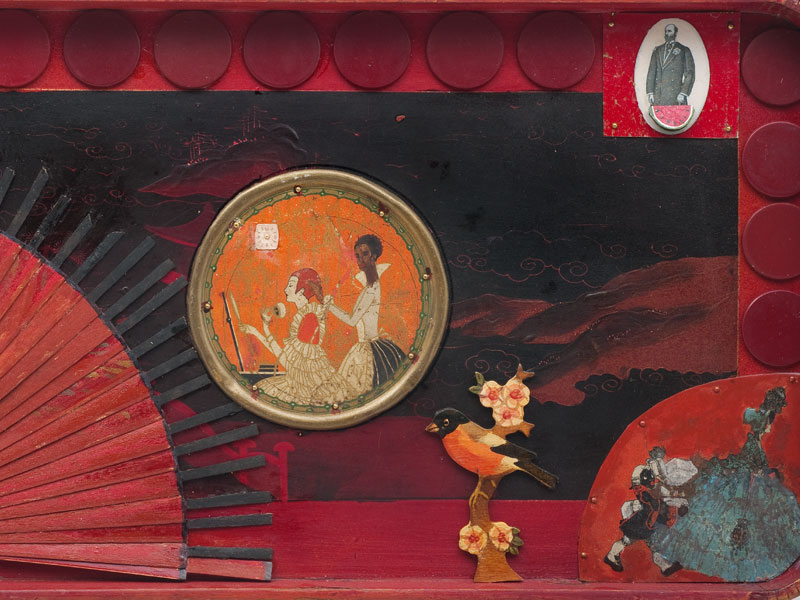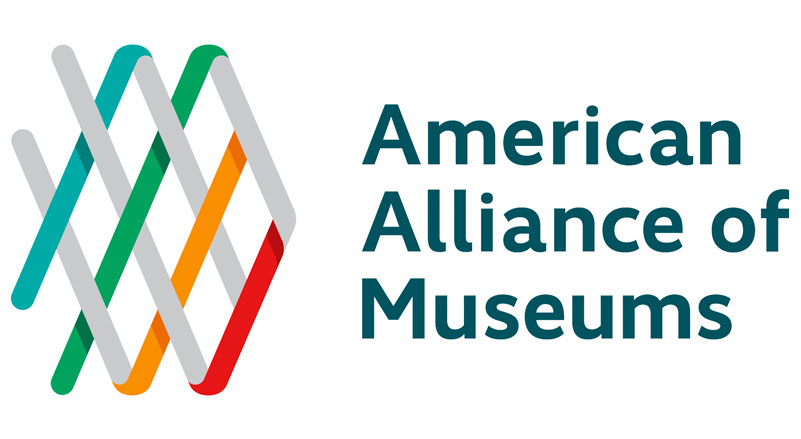
RELEASE DATE: DEC 2020
The Weatherspoon Art Museum at UNC Greensboro announces the opening of three new exhibitions curated from its collection. Markmaking: Selections from the Collection (January 2 – April 3, 2021), Slow Looking/Deep Seeing (January 16 – June 19, 2021), and Vibrant: Artists Engage with Color (February 27 – August 14, 2021).
Studies show that the average time museum visitors spend in front of a work of art is 8 seconds, similar to the human attention span for any one thing in general. What happens however when we take time to look? Curator of education Ann Grimaldi says, “It’s fascinating to notice what thoughts and feelings arise from focused observation. It’s not something we typically practice and so it can feel pretty uncomfortable. What’s interesting is the way our understanding can change when we look objectively and with purpose.”
This winter, visitors to the Weatherspoon can practice slow looking—no art degree or lengthy label reading required! Three exhibitions were pulled from the museum’s collection with this thought in mind. It might be a vibrant color or splashy brushstroke that grabs your attention, but the next step, says Grimaldi, is to ask yourself, “What are you seeing that makes you think (or feel) that?” Asking these questions along with talking with a friend or taking notes will naturally help you slow down and see more in your life.
The Weatherspoon’s collection is considered to be one of the foremost of its kind in the Southeast. It represents most major art movements from the beginning of the 20th century to the present.
Markmaking: Selections from the Collection
January 2 – April 3, 2021
The artworks in this exhibition show a plethora of approaches to markmaking, a term used to describe the different types of lines, scratches, smudges, patterns, dots, and textures that result from the way an artist applies a material, such as graphite or paint, to a surface. Because each mark possesses unique characteristics as well as contributes to the entire composition, it is an effective way to communicate. Marks can be descriptive, intuitive, or expressive. For example, some marks suggest vigorous energy or movement owing to the way they were applied, while others denote close attention to detail. Still, others feature novel techniques such as cutting and burning. On display are works by, among many others: Natalie Alper, Keith Carter, Sol LeWitt, Vik Muniz, Alyson Shotz, and Robert Smithson. In all, these objects show how distinct strokes and application methods make each—and its artist—unique.
Top, right image: Alyson Shotz, Untitled (two checks), about 1996 (detail). Sumi ink on canceled checks, 13 3/4 x 14 1/2 in. Weatherspoon Art Museum. Gift of Lesley Spector Birenbaum, 2002.13.3. © Alyson Shotz
Slow Looking/Deep Seeing
January 16 – June 19, 2021
Research has shown that visitors to art venues spend only a few seconds looking at each work on display. The Weatherspoon’s curatorial and education staff has organized an exhibition drawn from the museum’s collection that will offer visitors a chance to slow down, make discoveries, and effectively connect with works of art.
Slow Looking/Deep Seeing features a variety of works, both modern and contemporary, and is divided into three sections to facilitate immersive viewing: Reading the Narrative/Image, Noticing as Contemplative Practice, and Interpreting Movement. Figurative paintings with complex narratives will prompt viewers to take some time to decipher their meaning, while both representational and abstract artworks will allow for in-depth examination and peaceful contemplation. Slow Looking/Deep Seeing will be used by UNCG courses this spring as part of the museum’s Art of Seeing program. Now in its eleventh year, the program is designed to help students in health and human science fields hone their visual, diagnostic, interpretative, and communication skills.
Vibrant: Artists Engage with Color
February 27 – August 14, 2021
Our associations with colors are profound and diverse. Someone “seeing red” is angry, someone “feeling blue” is sad. A “green” product is environmentally friendly, while a jealous person is “green with envy.” We associate yellow with springtime—sunshine, daffodils, and baby chicks—yet also know it as an indication of low-level threats in color-coded alert systems. We make use of colors as forms of expression. Likewise for artists, color is a dynamic tool—one that can capture moods and suggest meanings. This exhibition presents works from the Weatherspoon’s collection in which artists have chosen to feature singular colors to dramatic effect. Individually, they engage a breadth of content; collectively, they offer a vibrant installation that allows us to explore the color spectrum and appreciate its impact.
Image: Betye Saar, To the Manor Born, 2011 (detail). Mixed media assemblage, 11 1/2 x 20 1/2 x 2 1/4 in. Weatherspoon Art Museum. Purchased with funds from the Jefferson-Pilot Endowment, the Robert C. Ketner Family Acquisition Endowment, the Carol and Seymour Levin Acquisition Endowment, the Lynn Richardson Prickett Acquisition Endowment, and the Judy Proctor Acquisition Endowment, 2016.18. © Betye Saar, photo courtesy of the artist and Roberts Projects, Los Angeles
About the Weatherspoon Art Museum
Mission
Embracing its public service role, the Weatherspoon Art Museum at UNC Greensboro fosters the ability of art to impact lives and connect multiple communities.
History
The Weatherspoon Art Museum at UNC Greensboro was founded by Gregory Ivy in 1941 and is the earliest of any art facilities within the UNC system. The museum was founded as a resource for the campus, community, and region, and its early leadership developed an emphasis—maintained to this day—on presenting and acquiring modern and contemporary works of art. A 1950 bequest from the renowned collection of Claribel and Etta Cone, including prints and bronzes by Henri Matisse and other works on paper by American and European modernists, helped establish the Weatherspoon’s permanent collection. During Ivy’s tenure, other prescient acquisitions included a 1951 suspended mobile by Alexander Calder, Willem de Kooning’s pivotal 1949-50 Woman, and the first drawings by Eva Hesse and Robert Smithson to enter a museum collection.
In 1989, the museum moved into its present location in The Anne and Benjamin Cone Building designed by the architectural firm Mitchell Giurgola. The museum has six galleries and a sculpture courtyard with over 17,000 square feet of exhibition space. The American Alliance of Museums first accredited the Weatherspoon in 1995.
Collections + Exhibitions
The collection of the Weatherspoon Art Museum is one of the foremost of its kind in the Southeast. It represents all major art movements from the beginning of the 20th century to the present. Among the nearly 7,000 works in the collection are pieces by such prominent figures as Henry Ossawa Tanner, Edward Weston, Joseph Stella, David Smith, Jackson Pollock, Elizabeth Catlett, Louise Nevelson, Gordon Parks, Sol LeWitt, Robert Mangold, Cindy Sherman, Adrian Piper, Betye Saar, Amy Sillman, Nick Cave, Jennifer Steinkamp, and Sanford Biggers. The museum regularly lends to major exhibitions nationally and internationally.
The Weatherspoon is also known for its dynamic exhibition program. Through a lively annual calendar of exhibitions and a multidisciplinary educational program for audiences of all ages, the museum provides an opportunity for visitors to consider artistic, cultural, and social issues of our time—enriching the life of our university, community, and region.
UNC Greensboro
UNC Greensboro is a learner-centered public research university with 18,000 students in eight colleges and schools pursuing more than 150 areas of undergraduate and 200 areas of graduate study. Recognized nationally for helping first-generation and lower-income students find paths to prosperity, UNCG is ranked No. 1 most affordable institution in North Carolina for net cost by the N.Y. Times and No. 1 in North Carolina for social mobility by The Wall Street Journal. Designated an Innovation and Economic Prosperity University by the Association of Public and Land-grant Universities, UNCG is a community-engaged research institution with a portfolio of more than $67M in research and creative activity. The University creates an annual economic impact for the Piedmont Triad region in excess of $1B. Please visit uncg.edu and follow us on Facebook, X, Instagram, Bluesky and LinkedIn.
Weatherspoon Art Museum
UNC Greensboro
1005 Spring Garden Street
Greensboro, NC 27412, (336) 334-5770, weatherspoon@uncg.edu
For more information or press images, contact:
Loring Mortensen, Head of Communications, (336) 256-1451, lamorten@uncg.edu


